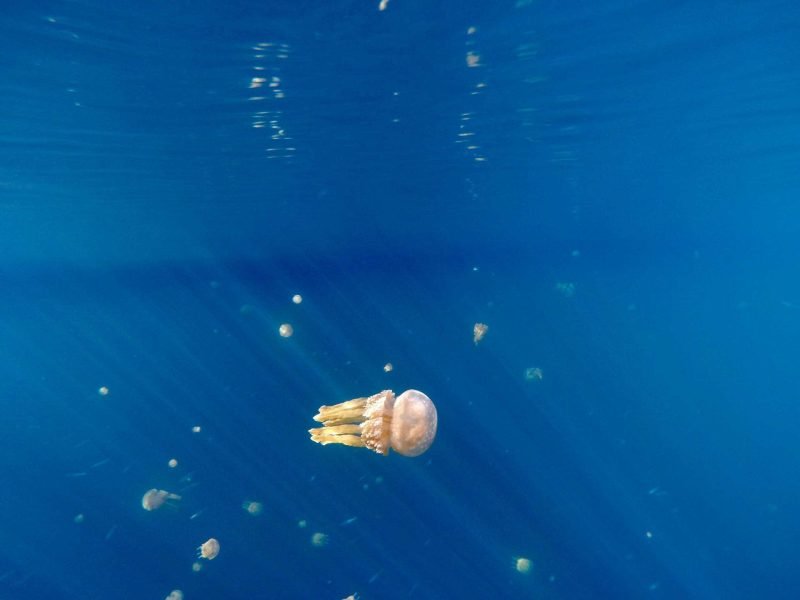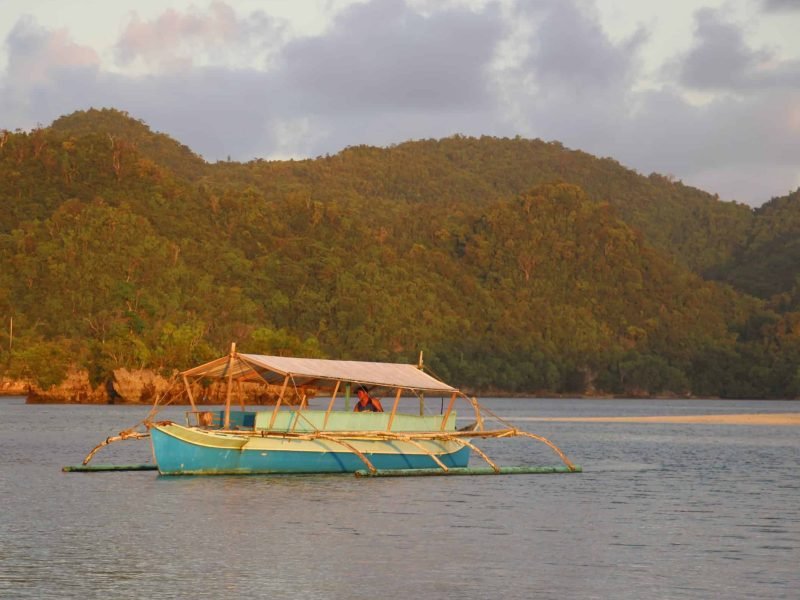The Jellyfish Lake is one of the hidden gems of Siargao, offering an incredible opportunity to get up close and personal with thousands of harmless jellyfish in a stunning natural setting. Located on the island of Sohoton Cove, in the northern part of Siargao, this lake is a must-visit for those seeking a one-of-a-kind adventure in the Philippines.
What makes the Jellyfish lake special?
The Jellyfish Lake is a marine lake, which means it’s an inland body of water that connects to the ocean through underground tunnels. What makes this lake so special is its population of golden jellyfish (Mastigias papua) that live in the lake’s crystal-clear waters. These jellyfish are unique because they don’t sting, which makes it safe for swimmers to interact with them.
The jellyfish in the lake thrive due to the unique conditions that have developed in the lake over thousands of years, such as the lack of predators and the presence of ample sunlight that allows them to grow in large numbers. These jellyfish have adapted to life in the lake by losing their sting over time, making it an incredibly safe and magical experience for those who venture into the water.

How to Get There
To get to the Jellyfish Lake, you will need to take a boat ride to Sohoton Cove, which is located in Sohoton National Park in the northern part of the island. The most common route is to hire a local boat or join an island-hopping tour from General Luna. The boat ride will take you to the entrance of Sohoton Cove, from where you’ll take a short paddleboat or kayak ride to the lake itself.
It’s best to visit during low tide for the clearest waters and the most vibrant jellyfish sightings. You will also need to get a guide, as swimming in the lake is regulated to protect its delicate ecosystem.

Things to do at the Jellyfish Lake
- Swim with the Jellyfish: The main attraction here is the chance to swim among thousands of golden jellyfish, floating weightlessly in the clear waters. You can gently glide through the water, watching these beautiful creatures pulsate and drift by.
- Photography: The Jellyfish Lake is an excellent spot for photographers. The golden jellyfish, clear water, and serene surroundings provide perfect opportunities for underwater shots. Just make sure to respect the ecosystem and avoid disturbing the wildlife.
- Exploring Sohoton Cove: In addition to Jellyfish Lake, Sohoton Cove is home to other stunning natural wonders like Tayangban Cave Pool and various caves and lagoons. You can explore the entire area by kayak, paddleboard, or boat, making for a full day of adventure and exploration.
Best Time to Visit
The best time to visit the Jellyfish Lake is from March to June, during the dry season when the waters are calm, and visibility is at its best. However, the jellyfish population remains constant throughout the year, so you can enjoy the experience at any time. Avoid visiting during the rainy season (June to November) as heavy rains can make access to the lake more difficult.
Good to Know:
Jellyfish lakes are extraordinary ecosystems that are incredibly rare and found in only a few places around the world. These unique marine lakes are typically isolated from the ocean, with narrow underwater tunnels or porous limestone allowing limited water exchange. Over time, the jellyfish populations in these lakes have evolved in isolation, often losing their stinging ability due to the absence of predators. This creates a safe and serene environment for people to experience swimming among these fascinating creatures.
There are only a few other known Jellyfish lakes, which are Palau in the Philippines and also two lakes in Indonesia.
Important Tips
- Respect the Environment: The Jellyfish Lake is a protected area, and it’s crucial to be mindful of the ecosystem. Avoid touching or disturbing the jellyfish, and always follow the instructions given by your guide.
- Bring Waterproof Gear: If you want to take photos or videos underwater, bring waterproof gear or a camera with a good case.
- Life Jackets: Life jackets are required for all visitors, as the lake’s waters can sometimes be deep and strong.